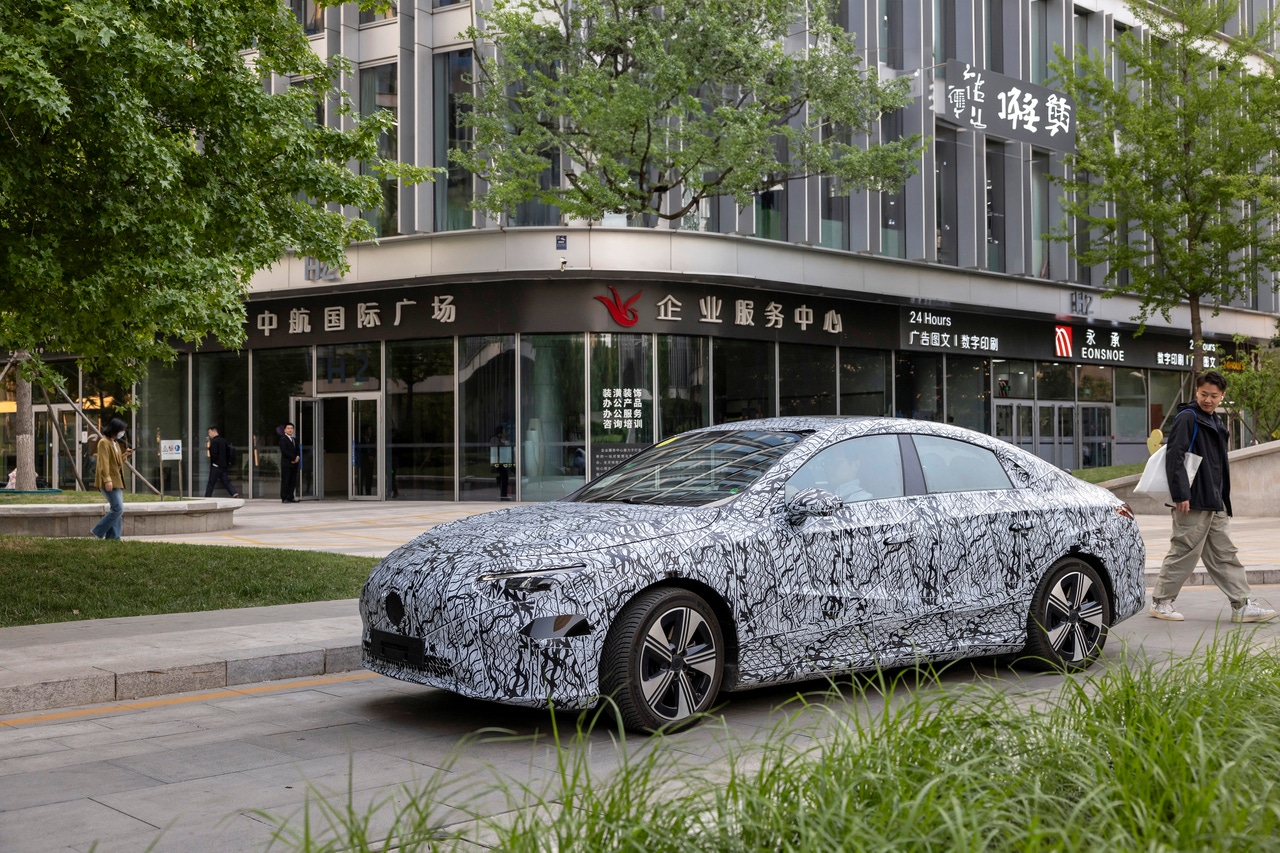2025 Mercedes-Benz CLA to Offer Autonomous Urban Driving Capability2025 Mercedes-Benz CLA to Offer Autonomous Urban Driving Capability
The new point-to-point autonomous driving system, revealed exclusively to WardsAuto at the Mercedes-Benz research center in Beijing, allows a driver to go (mostly) hands-off in urban driving conditions.

Mercedes-Benz has spent big on autonomous driving technology in recent years, with success to show for it. Its latest Drive Pilot system introduced to the U.S. market earlier this year sets a high standard of precision, providing impressive hands-off driving capability in the S-Class sedan for extended distances.
But only in California and Nevada. Presently, they are the only two states where the German automaker can legally sell its Level 3 autonomous system to American customers, owing to wildly differing laws across the country.
Not that Mercedes-Benz is resting on its laurels, though. With a new Level 2++ system nearing completion, it is aiming to conquer what is possibly the most complex autonomous driving scenario of all: busy city driving.
Set to be offered as an option on the third-generation CLA sedan launching in North America in 2025, it is conceived to provide hands-off point-to-point autonomous driving capability through traffic-clogged city streets and faster-flowing urban roads.
The proprietary system, which operates without the aid of high-definition mapping and lidar-based sensors, will be made available on all upcoming Mercedes-Benz models based on the MMA platform – a hybrid structure underpinning both future gasoline and all-electric versions.
An extension of Mercedes-Benz’s existing Drive Pilot system, it relies on a combination of ultra-sonic sensors, cameras and both short- and long-range radar units together with an in-house-developed software package with artificial intelligence support and a neural map network – all operating on a Nvidia OrinX Snap Dragon chipset.
It’s not completely driverless; the driver still must remain alert and occasionally take control of the steering wheel when a combination of acoustic and visual warnings sound. However, it is programmed to autonomously accelerate, brake and steer the car along routes chosen by the satellite navigation.
The operation of the new Level 2++ system was revealed exclusively to WardsAuto during a recent visit to Mercedes-Benz’s research center in Beijing, where its final development is currently taking place on a fleet of S-Class prototypes ahead of its planned inclusion as an option on the CLA sedan next year.
Although appearing like a regular S-Class, the prototype we rode in featured an additional MB.OS digital display showing all road users within the vicinity, including pedestrians, cyclists, motorcycle riders, cars and trucks. It also showed road markings within individual lanes and other information.
Simplicity is the name of the game here. After selecting your destination on the navigation system, all you have to do is drive off manually before triggering the system by pressing a control on the steering wheel, at which point it takes over the driving duties.
As the prototype follows the instructions provided by the navigation system, it turns right out of Mercedes-Benz’s vast Beijing facilities into a busy four-lane arterial road in the south of the Chinese capital, accelerating up to the prescribed 60-km/h (37-mph) speed limit and changing lanes without any prompting from the driver when it approaches slower traffic ahead.
After a mile or so, we encounter the first traffic light, at which the S-Class prototype autonomously brakes to halt in the far-left lane behind a row of other road users.
The positioning is important. When the traffic light turns green, we creep forward until we reach a major intersection. The prototype halts again and, as shown on a secondary screen used for testing, begins to recognize vehicles traveling in the opposite direction across which it wants to turn.
When the Mercedes-Benz sedan recognizes the oncoming traffic in the multi-lane road has been halted by a red light, it winds on more than a turn of the steering lock before moving off again to perform a U-turn – completely autonomously and without any aid from the driver.
“The U-Turn function is one of the most difficult to program,” says Mercedes-Benz’s chief software officer, Magnus Östberg, adding, “Not a lot of companies have the competency to offer this.”
It is not all plain sailing, though. On occasion, the system brakes the S-Class prototype suddenly when other road users swerve in and out of lanes to the left and right.
It also responded slowly to opportunities where the traffic cleared and it could accelerate unimpeded, clearly prioritizing safety over road position.
On the exit of a major Beijing ring road on our way back to Mercedes-Benz’s technical center, it decelerated quite dramatically, sensing the steel barrier ahead despite the road continuing to arc off to the right.
“We’re still putting the final touches to the software. There is some calibration work to come,” says Östberg.
Nevertheless, our 30 minutes in the S-Class prototype in the midst of Beijing rush-hour traffic proved Mercedes-Benz is close to realizing its goal of offering hands-off driving capability in busy urban driving environments. Its new point-to-point autonomous system is not perfect yet, but with some tweaking to introduce more seamless qualities it promises to bring a revolutionary change to the daily commute – and not only in its most expensive models, but also at the entry point to its lineup in the next-generation CLA.
About the Author
You May Also Like

